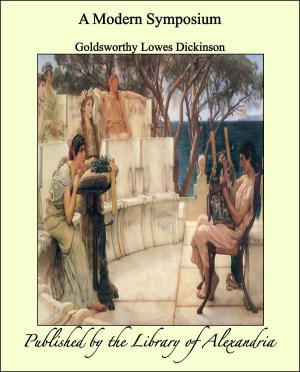The Pianolist: A Guide for Pianola Players
Nonfiction, Religion & Spirituality, New Age, History, Fiction & Literature| Author: | Gustav Kobbé | ISBN: | 9781465604019 |
| Publisher: | Library of Alexandria | Publication: | March 8, 2015 |
| Imprint: | Language: | English |
| Author: | Gustav Kobbé |
| ISBN: | 9781465604019 |
| Publisher: | Library of Alexandria |
| Publication: | March 8, 2015 |
| Imprint: | |
| Language: | English |
I find a great feature of the so-called mechanical piano-player lies in what it allows you to do yourself. It provides you with technique, but, to use a colloquial phrase, "you can still call your soul your own." The technique, the substitute for that finger facility which only years of practice will give, is the pianola's; but the interpretation is yours! The instrument provides the devices for accelerating or retarding the time and for making the tone loud or soft, but when to whip up the time or to slow down, when to use the sustaining or the soft lever or when to swell through a crescendo from pianissimo to fortissimo—all that is left to your own taste, judgment and discretion. There is, indeed, among the improvements introduced in the pianola a contrivance, of which more hereafter, by which complete directions are given for the interpretation of the roll of music that is being played. These directions, however, are not compulsory. They are, in each instance, based on high authority and are of great value even to persons who are thoroughly familiar with the music, but they need not be followed if the player does not want to follow them. He is likely in the beginning to accept the directions, the so-called metrostyle marking, as he would the instruction of a high class teacher, while, later on, he may incline to regard the metrostyle as indicating the general spirit in which the piece should be interpreted, but vary it in detail as his mood or fancy dictates. The metrostyle may, in fact, be called the pianolist's "coach," giving him the kind of hints and directions which even the greatest players and singers value. Something, however, of the pianolist himself, something of his own thought and feeling goes into every interpretation. That this is so is proved by the fact that no two pianolists interpret the same composition alike. There are differences, more or less marked, just as there are when the same piece is played by two pianists. In the broader outlines, in general spirit, the interpretations may be the same, but they will be distinguished by subtle shadings that indicate temperamental differences. The perspective of a landscape varies when viewed from different windows; so does life when observed from different points of view; so does the interpretation of a composition when played by different people on the pianola.
I find a great feature of the so-called mechanical piano-player lies in what it allows you to do yourself. It provides you with technique, but, to use a colloquial phrase, "you can still call your soul your own." The technique, the substitute for that finger facility which only years of practice will give, is the pianola's; but the interpretation is yours! The instrument provides the devices for accelerating or retarding the time and for making the tone loud or soft, but when to whip up the time or to slow down, when to use the sustaining or the soft lever or when to swell through a crescendo from pianissimo to fortissimo—all that is left to your own taste, judgment and discretion. There is, indeed, among the improvements introduced in the pianola a contrivance, of which more hereafter, by which complete directions are given for the interpretation of the roll of music that is being played. These directions, however, are not compulsory. They are, in each instance, based on high authority and are of great value even to persons who are thoroughly familiar with the music, but they need not be followed if the player does not want to follow them. He is likely in the beginning to accept the directions, the so-called metrostyle marking, as he would the instruction of a high class teacher, while, later on, he may incline to regard the metrostyle as indicating the general spirit in which the piece should be interpreted, but vary it in detail as his mood or fancy dictates. The metrostyle may, in fact, be called the pianolist's "coach," giving him the kind of hints and directions which even the greatest players and singers value. Something, however, of the pianolist himself, something of his own thought and feeling goes into every interpretation. That this is so is proved by the fact that no two pianolists interpret the same composition alike. There are differences, more or less marked, just as there are when the same piece is played by two pianists. In the broader outlines, in general spirit, the interpretations may be the same, but they will be distinguished by subtle shadings that indicate temperamental differences. The perspective of a landscape varies when viewed from different windows; so does life when observed from different points of view; so does the interpretation of a composition when played by different people on the pianola.















